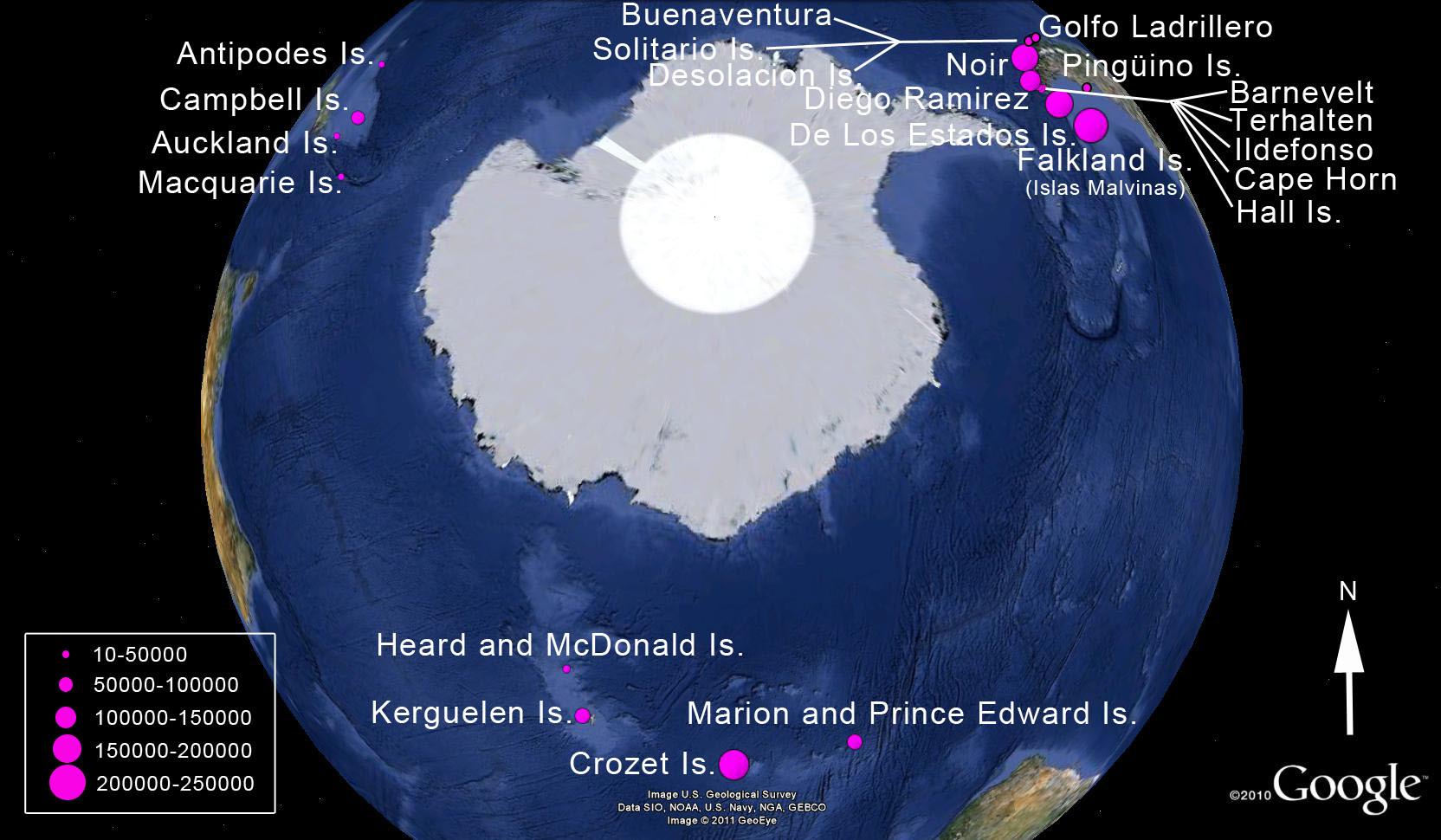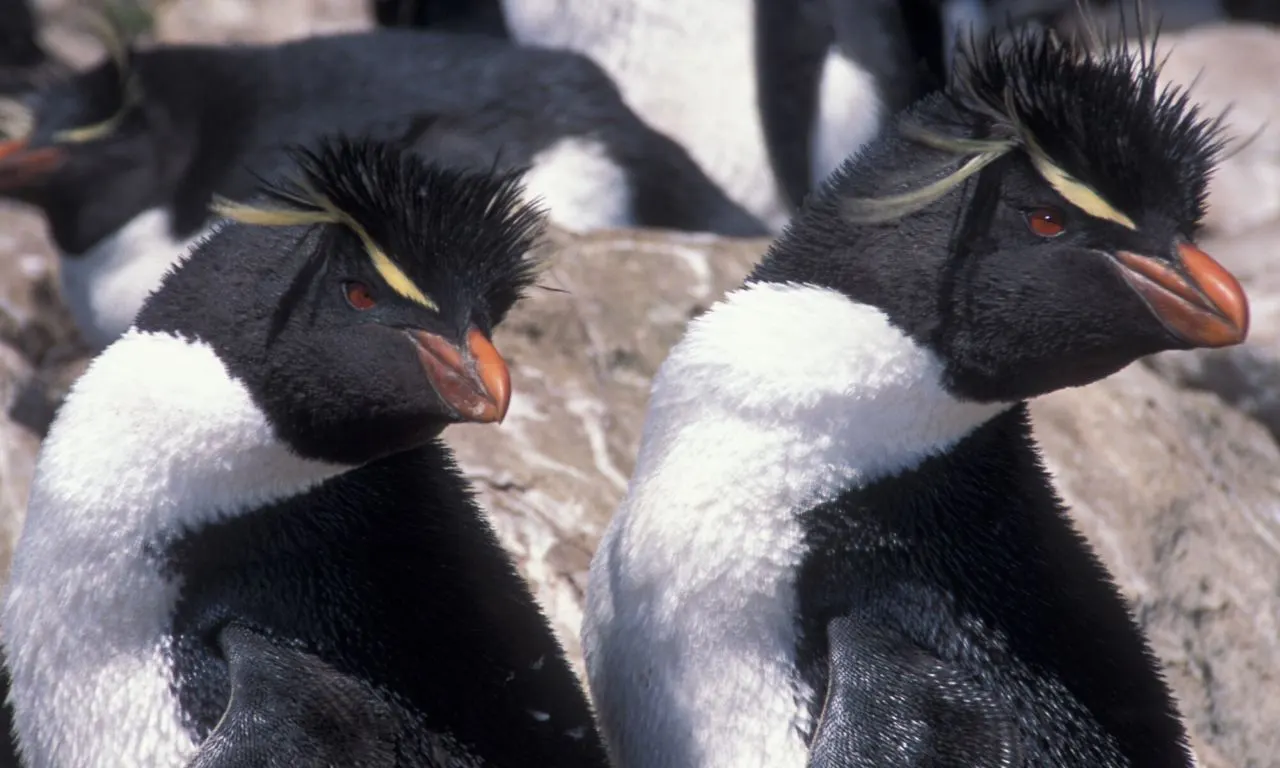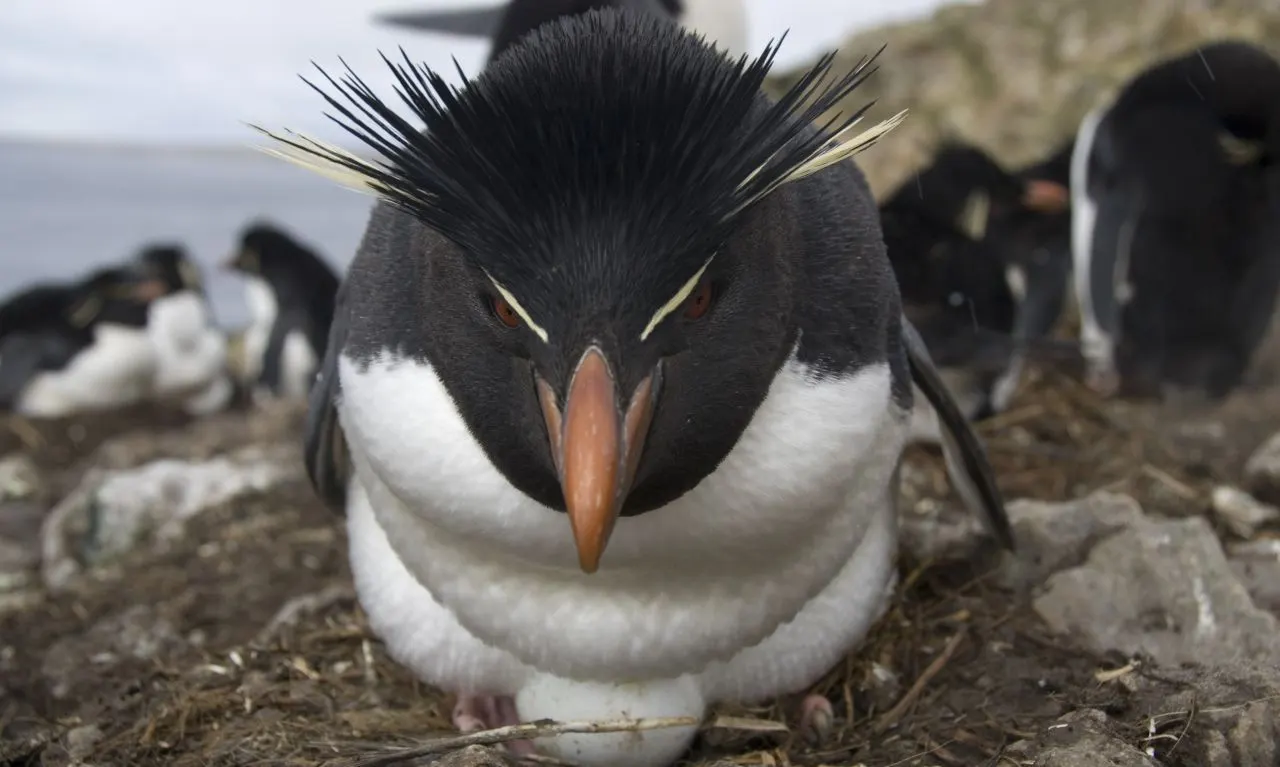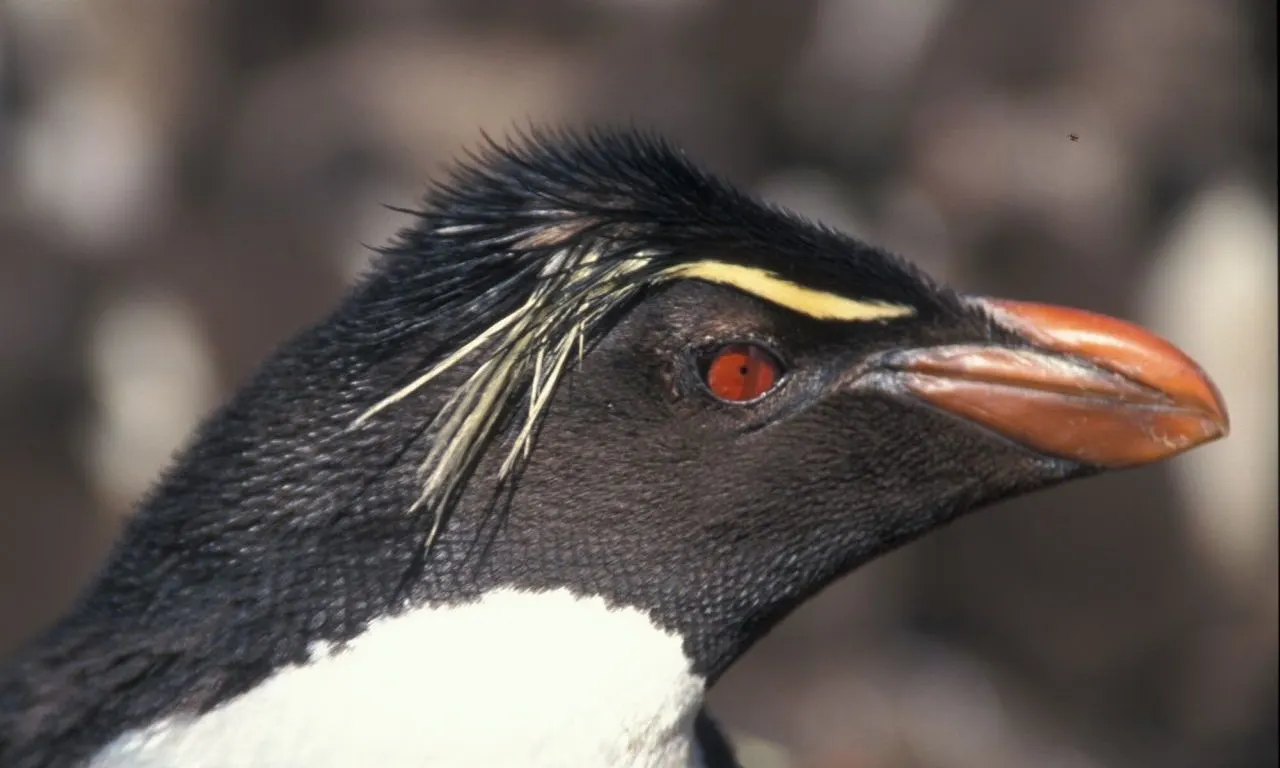Southern Rockhopper Penguin - Eudyptes chrysocome
- DESCRIPTION
- Medium-sized crested penguin (2-3.8 Kg, 42 cm tall). Sexes are similar, but females are smaller. Upperparts, head and tail grey-bluish after the moult, turning brownish with time. Underparts silky white. Flippers blue-black dorsally with white trailing edges and white with black markings ventrally. Yellow superciliary stripe extending from 1-2 cm behind the upper mandible horizontally back above the eyes. Orange-red bill, bright red iris and pink legs and feet, with black soles.
- DISTRIBUTION
-
circumpolar, breeding on sub-Antarctic and temperate islands from 46°S to 54°S
in the Atlantic Ocean (Falklands/Malvinas, Isla Pingüino and Isla de los
Estados), in the Indian Ocean (Marion and Prince Edward Islands, Crozet Islands,
Kerguelen Islands, Heard and McDonald Islands). In the Pacific Ocean (Macquarie
Island, Campbell Island, Auckland Island, Antipodes Islands and seven islands
off the coast of Chile: Barnevelt, Terhalten, Buenaventura, Ildefonso, Noir and
Diego Ramirez). Migratory between May and October.

- HABITAT
- Marine. Breeding colonies located from sea-level to cliff-tops and sometimes inland, usually in rocky areas. Nests shapes vary from small, circular scrape lines to constructions with vegetation, stones and bones.
- BREEDING BIOLOGY
- Breeders arrive in October. Two eggs are laid within 4-5 days in early November, and incubated for 32 -34 days. At first, both partners remain for some days at the nest before the male leaves for 2-4 weeks. Afterwards, the female go to the sea for 1-2 weeks. Hatching and brooding in December, creching in January, fledging in early February. The timings vary depending on year but also on location
- FEEDING
- opportunistic feeders, preying on fishes, crustaceans and cephalopods.
- REPRODUCTIVE POPULATION
- 1,200,000 pairs.
- Conservation status (IUCN) and threats
- “Vulnerable” (IUCN Red List 2018). This species undergone rapid population declines, which, although they have been ongoing for perhaps a century, appear to have worsened in recent years. Major threats are oceanographic changes caused by global warming, largely influencing food availability, commercial fishing, hydrocarbon exploration and exploitation and ecotourism.
- SOURCE
- Source: Pütz, K., Raya Rey, A., and Otley, H. 2013. Southern Rockhopper Penguin (Eudyptes chrysocome). In PENGUINS: NATURAL HISTORY AND CONSERVATION (García Borboroglu, P.G. and Boersma, P.D. eds.) University of Washington Press, Seattle U.S.A. 328 pp.




